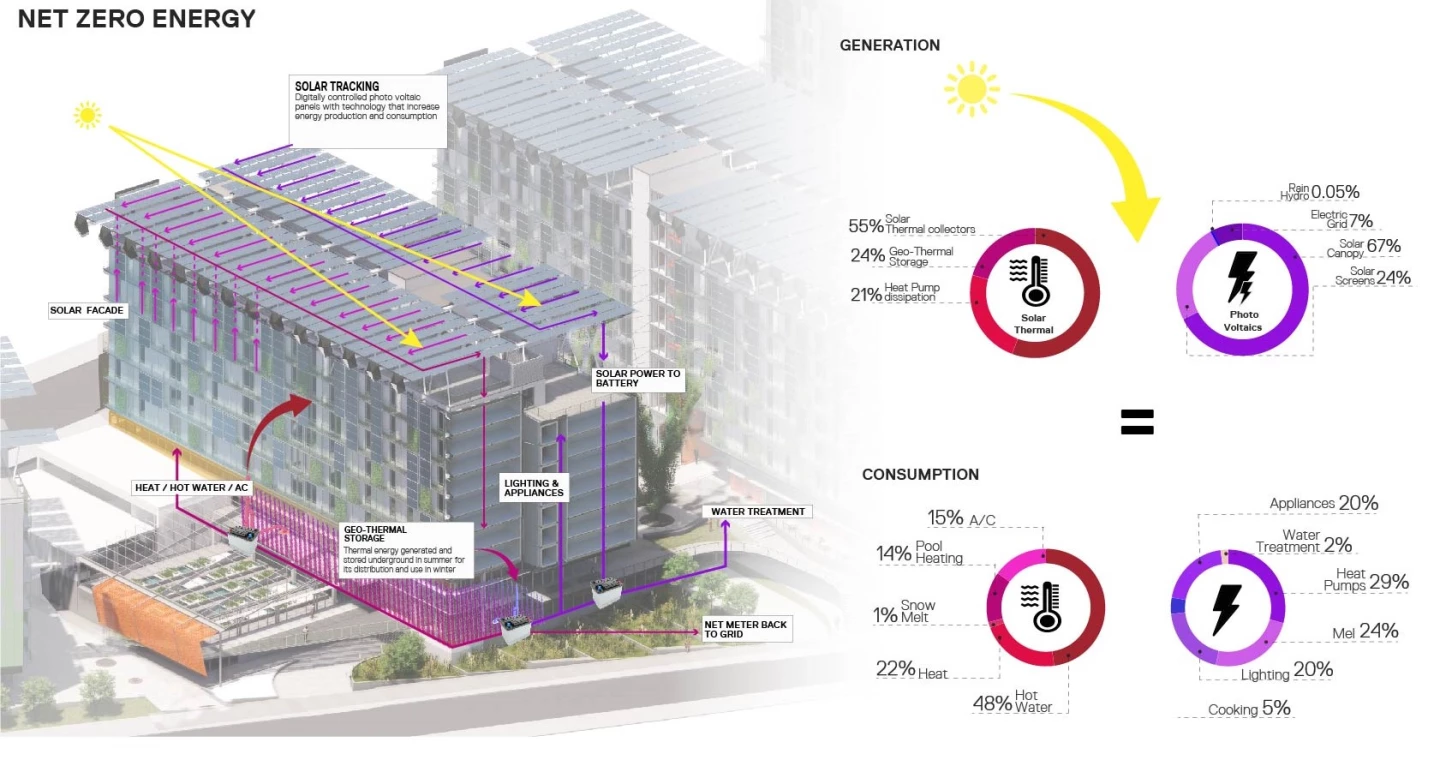New York-based Garrison Architects has joined forces with sustainable developers South End Development to create what they believe to be the very first triple net-zero mixed-use project in the United States. Dubbed Seventy-Six, the sustainably ambitious project aims to achieve a zero-impact development that will generate 100 percent of its energy demand via renewable sources, treat and reuse 100 percent of waste water and recycle or compost 100 percent of all generated waste.
The award-winning design concept is part of the New York State Energy Research and Development Authority’s Buildings of Excellence competition and is planned for development in the heart of the South End neighborhood, located in Albany, New York.
“The project brings ground-breaking triple net-zero sustainability, resiliency, and beauty to the deserving South End community,” says New York State Energy Research and Development Authority. “As a proof of concept, this project demonstrates that conscious building can be regenerative, creative, healthy, integrated, and inspiring. By pushing the envelope of what a building can be and the purpose it can serve.”
This project represents a 77,609-gross-sq-ft (7210 sq-m), seven-floor mixed-use structure, consisting of 69 residential apartments, and with 11 percent of the structure allocated for business use. The residential apartments comprise a mix of studios; one, two, and three-bedroom units; duplexes; and modular dwellings that can be re-configured for flexibility or alternative uses. The building boasts a strong focus on creating affordable housing, while also providing a healthy and eco-friendly environment for its inhabitants.

“As proof of concept, this project exceeds state initiatives in sustainability and creates new opportunities for the local community,” says South End Development. “The Complex promotes well-being for every resident, partner, and employee. The Seventy-Six project represents a more robust and balanced ecosystem that will continue to be a positive impact on future generations.”
To achieve its triple net-zero status, the building design features a shared and scalable energy generation system, which incorporates the use of a ground source heat pump, solar-thermal hot water, energy recovery ventilation, photovoltaic panels and wind turbines. All apartments will be fitted with induction cooktops, heat-pump clothes dryers and energy efficient appliances.

The water treatment system reduces all sewage and storm outflows via the use of water collection and filtering technologies. All water and sewage waste will be either re-used, composted or incinerated onsite. Furthermore, the project includes a "Living Machine" urban farming model, with vertical gardens and aquaculture; combining marine life with vegetable plots. The farming infrastructure will be integrated into the building’s water filtration system.

“The Living Machine will utilize and demonstrate interdependent biological cycles to grow, clean, and maintain the environment including constructed wetlands, organics composting, and water reuse; that will help to achieve environmental justice by providing clean air, water, and nutritious foods in a non-toxic material environment,” says Garrison Architects.
The Seventy-Six Complex is in the early stages of schematic design and is one of 13 qualifying projects for the Buildings of Excellence competition.
Source: Garrison Architects, South End Development via Treehugger













